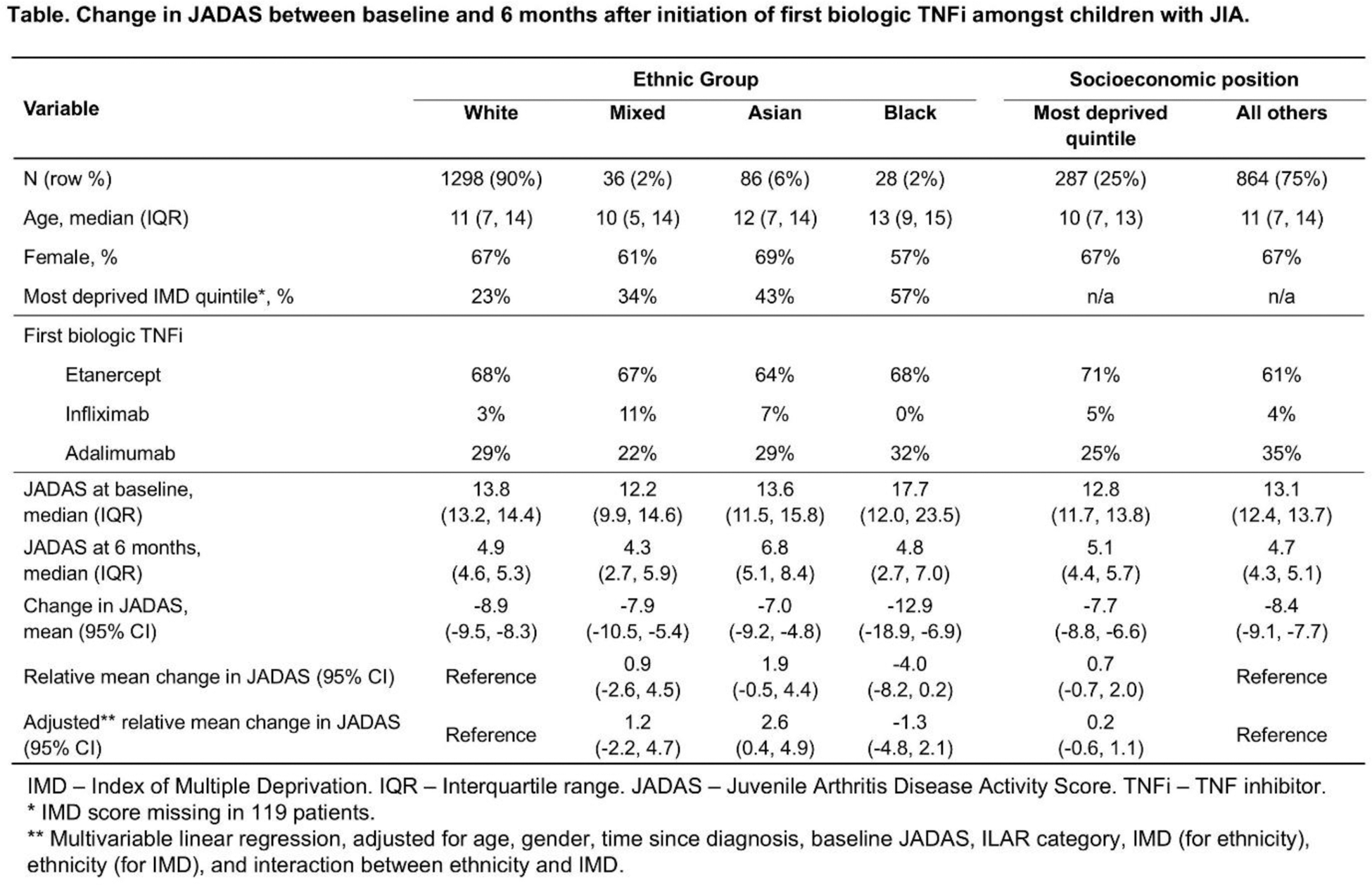

Background: Ethnicity and socioeconomic position have previously been associated with outcomes across many diseases. Many children and young people with Juvenile Idiopathic Arthritis (JIA) commence treatment with biologic DMARDs, which for the majority of patients is a TNF inhibitor (TNFi). Yet outcomes in JIA following TNFi have not been investigated by these sociodemographic factors.
Objectives: This analysis aims to investigate the association between outcomes over the first 6 months following initiation of a TNFi as their first biologic, and ethnicity and socioeconomic position, in children and young people with JIA.
Methods: Patients with non-systemic JIA recruited to the UK JIA Biologics Register between January 2000 and April 2024 and starting a TNFi as their first biologic were included. The primary outcome was the mean change in Juvenile Arthritis Disease Activity Score (JADAS-71) between baseline and 6 months of follow-up. Multivariable linear regression was used to assess the association between ethnicity (grouped as White, Mixed, Asian and Black) or relative deprivation (using quintiles of the Index of Multiple Deprivation, IMD), and change in JADAS, adjusted for age, gender, time since diagnosis, baseline JADAS, ILAR category, and interaction between ethnicity and IMD. Multiple imputation was used to handle missing data.
Results: A total of 1448 patients were included (Table 1). Median age 11 years, 66% female, 90% White ethnic group (2% Mixed, 6% Asian, 2% Black), 25% in most deprived quintile, 68% first TNFi was etanercept (4% infliximab, 29% adalimumab). Six months after starting their treatment, mean change in JADAS was -8.8 units (95% CI -9.4, -8.3), indicating overall improvement. Compared to those with White ethnicity, children with Asian ethnicity experienced an overall lesser mean improvement in JADAS of 2.6 units (95% CI 0.4, 4.9). Children of Mixed or Black ethnicity experienced similar improvement as those with White ethnicity. There was no significant difference observed in change in JADAS between those living in the most deprived areas compared to those the rest of the cohort (0.2 units [95% CI -0.6, 1.1]). The interaction between ethnicity and IMD was not significant.
Table 1.

Conclusion: In this analysis comparing change in disease activity in the first six months following the start of first biologic (TNFi) in children and young people with JIA, we found an association between ethnicity and improvements in disease activity, independent of socioeconomic position. Due to the small sample sizes of some of the ethnic groups, further work should be completed in larger patient groups to confirm these conclusions.
REFERENCES: NIL.
Acknowledgements: NIL.
Disclosure of Interests: None declared.
© The Authors 2025. This abstract is an open access article published in Annals of Rheumatic Diseases under the CC BY-NC-ND license (